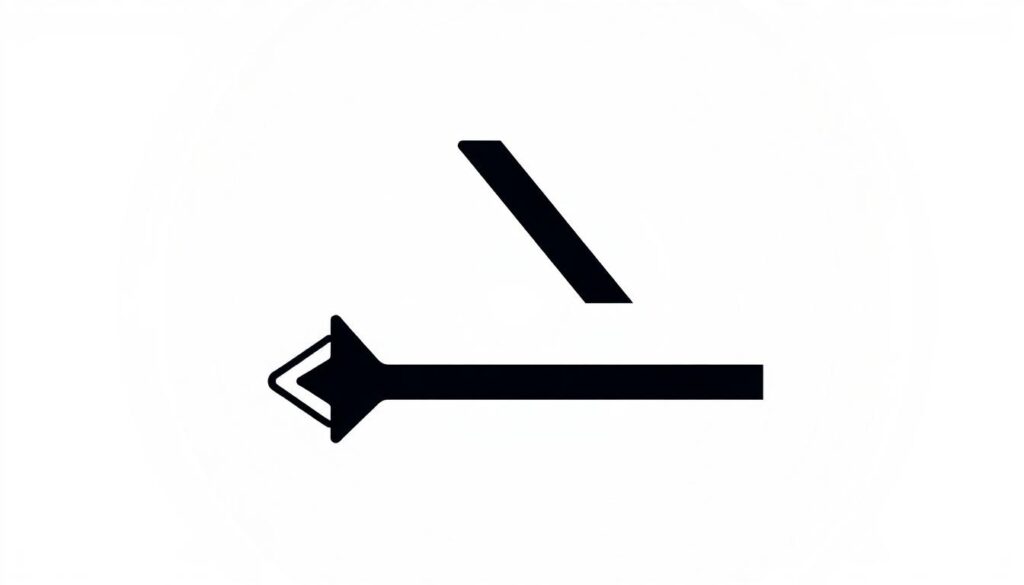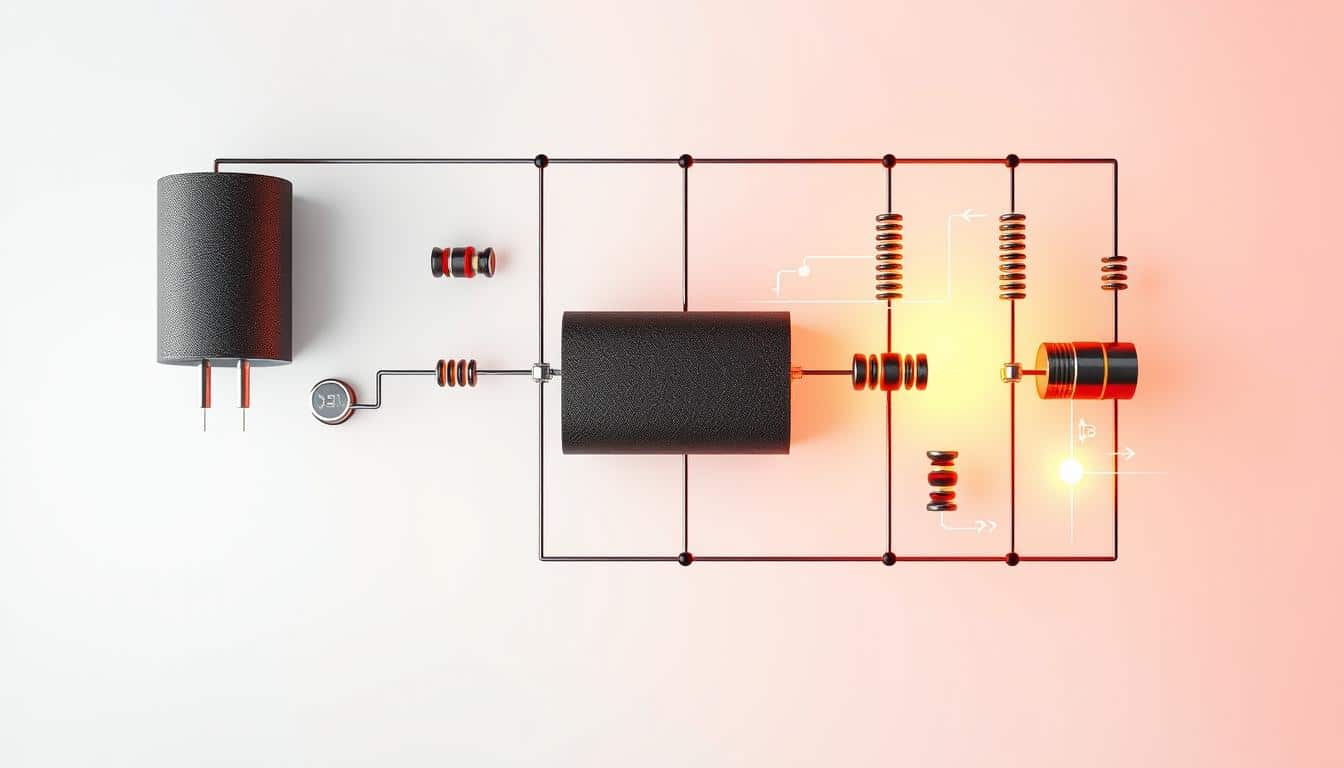Have you ever thought about how your devices receive electricity? It’s due to rectifier diodes, the unacknowledged champions of electronics. But what exactly are they, and how do they convert AC to DC power?
Rectifier diodes are essential for the proper functioning of your gadgets. They allow electric current to flow in just one direction while preventing it from reversing. This guarantees that your devices receive a consistent DC power supply, which is crucial for everything from tiny gadgets to large machinery. Made primarily from silicon, they can withstand significant power levels.
Rectifier diodes serve more purposes than merely changing the type of electricity. They are instrumental in creating power supplies, chargers, and various circuits. Familiarizing yourself with the various types of rectifier diodes enhances your comprehension of how modern devices operate.
Key Points
- Rectifier diodes transform AC into DC power, vital for electronic devices.
- The main role of a rectifier diode is to permit current to flow in a single direction.
- Typically composed of silicon, they can manage diverse electrical outputs.
- Gaining insight into the different kinds of rectifier diodes can deepen your understanding of electronic circuits.
- Common uses include power supplies and battery chargers.
Comprehending Diodes in Electronics
Diodes play a crucial role in contemporary electronics. They function as semiconductors, allowing current to move in only one direction. This is referred to as rectification. They are vital for converting AC into DC, which most devices require for functionality.
The Function of Diodes in Circuits
Grasping what a diode is in a circuit entails recognizing their significance. Diodes allow current to move exclusively in one direction. This shields delicate components from potential damage caused by incorrect voltage. A diode rectifier converts AC into DC, supplying devices with the stable power they require.
Varieties of Diodes and Their Roles
Numerous types of diodes exist, each tailored for specific tasks. Let’s examine some common varieties:
- Standard Diodes: Utilized for basic rectification, commonly found in various circuits and supplies.
- Fast Recovery Diodes: Ideal for rapid switching, employed in RF and digital circuits.
- Schottky Diodes: Feature a metal-semiconductor junction, effective for high-speed and low voltage, utilized in high-frequency applications.
- Zener Diodes: Primarily for voltage stabilization, safeguarding circuits from sudden voltage fluctuations.
These instances illustrate the diverse applications of diodes. Their capacity to undertake different functions underscores their significance in electronics. This makes the diode definition electricity fundamental for contemporary technology.
| Type of Diode | Main Function | Applications |
|---|---|---|
| Standard Diode | General Rectification | Power Supplies, Electronic Circuits |
| Fast Recovery Diode | Rapid Switching | RF Systems, Digital Circuits |
| Schottky Diode | Low Voltage Drop, High-Speed Switching | High-Frequency Applications |
| Zener Diode | Voltage Regulation | Constant Voltage Maintenance, Circuit Protection |
What Is a Rectifier Diode?

A rectifier diode is a fundamental component in electronics. It ensures that current flows in only one direction. The ssayec432 model exemplifies the efficient operation of these diodes. They effectively convert alternating current (AC) into direct current (DC).
Definition and Core Function
A rectifier diode regulates the flow of electrical current. It allows current to proceed in one direction while obstructing it in the opposite direction. This characteristic is essential for converting AC into DC.
Symbol and Construction
The symbol representing a rectifier diode resembles a line with an arrow. It illustrates its operation. Constructed from silicon or other materials, these diodes cater to numerous requirements. Familiarity with the ssayec432 model enables us to recognize their reliability in maintaining consistent power supply in devices.
Operation Principle of Rectifier Diodes
Understanding how rectifier diodes function in electronic circuits is vital. They permit current to flow solely in one direction, making them useful for converting AC into DC.
Forward and Reverse Bias
In forward bias, the anode of the diode receives a positive voltage while the cathode gets a negative one. This allows current to flow, demonstrating how diodes work. Conversely, in reverse bias, the configuration prevents current flow. This is crucial for comprehending how rectifier diodes operate.
Transformation of AC to DC
Rectifier diodes play a pivotal role in converting AC to DC. This procedure, known as rectification, transforms AC’s alternating flow into a constant DC supply. So, what does a rectifier do? It permits either the positive or negative phase of AC to pass through, producing a pulsating DC.
There are two categories of rectifiers. Half-wave rectifiers allow only one half-cycle to pass. Full-wave rectifiers utilize both halves for a smoother DC output.
Half-Wave Rectifier Circuit
A half-wave rectifier circuit is a basic configuration for converting AC into DC. It employs a single diode to capture either the positive or negative segment of an AC waveform, resulting in a pulsating DC output. This method is efficient for straightforward applications.
Fundamental Design and Functionality
The half-wave rectifier relies on a single diode. It is oriented to conduct current during one half of the AC cycle. When the AC signal is positive, the diode permits current to flow through, converting it into DC.
When the signal is negative, however, the diode obstructs the current. This selective current flow defines the half-wave rectifiers meaning. It generates a unidirectional output with significant ripple content.
Uses of Half-Wave Rectifiers
Half-wave rectifiers find application in low-power environments. They are frequently encountered in:
- LED Biasing Circuits
- Small-Scale Battery Chargers
- Signal Demodulation
In these applications, capacitors are implemented to diminish ripple, leading to a more stable DC signal. This illustrates the practicality of half-wave rectifiers for basic, low-power needs.
| Features | Half-Wave Rectifier | Full-Wave Rectifier |
|---|---|---|
| Components | 1 Diode | 4 Diodes (Bridge) / 2 Diodes (Center-Tapped) |
| Efficiency | Low | High |
| Output | Pulsating DC | Smoother DC |
| Applications | Low-power Devices | High-power Supply Systems |
Full-Wave Rectifier Circuit

The full-wave rectifier circuit plays an essential role in converting AC into DC effectively. Unlike half-wave rectifiers, it utilizes both the positive and negative portions of the AC wave, resulting in a smoother and more stable DC output.
Design Variants: Center-Tapped vs. Bridge Rectifier
There are two primary types of full-wave rectifiers: the center-tapped transformer variant and the bridge rectifier.
- Center-Tapped Transformer Rectifier: This configuration employs a specialized transformer with a center tap and two diodes. The center tap serves as the reference point. Each half of the AC wave is rectified by one diode. While simpler, it requires a dedicated transformer.
- Bridge Rectifier: Utilizing four diodes arranged in a bridge configuration, this variant does not necessitate a center-tapped transformer. It’s more adaptable and can accommodate standard transformers.
Benefits of Full-Wave Rectifiers
Full-wave rectifiers offer numerous advantages compared to half-wave variants. They are extensively utilized in electronics for significant reasons. The primary benefits include:
- Enhanced Efficiency: They utilize the entire AC waveform, resulting in a higher average output voltage and improved efficiency.
- Minimized Ripple: The DC signal exhibits reduced ripple voltage, contributing to a smoother output.
- Boosted Power Output: They leverage all the AC power available, thus amplifying overall performance and productivity.
The full-wave rectifier diode configuration is crucial for delivering robust and stable DC voltage. It’s essential for a variety of electronic devices, illustrating the practical relevance of full-wave rectifiers.
Common Types of Rectifier Diodes
Understanding the various types of rectifier diodes is essential for selecting the appropriate component for your electronic projects. Each diode possesses unique characteristics that influence circuit performance and reliability.
There are multiple rectifier diode types that you will frequently encounter. Schottky diodes, Zener diodes, fast recovery diodes, and standard diodes are some of them. Your choice of diode depends on the specific requirements of your circuit, including switching speed, voltage tolerance, and efficiency.
- Schottky Diodes: Featuring a low voltage drop and fast switching capabilities, these diodes excel in high-speed applications due to their efficiency and lower power loss.
- Zener Diodes: Designed to maintain voltage stability, these diodes begin conducting when voltage surpasses a certain threshold, making them critical for voltage regulation in circuits.
- Fast Recovery Diodes: These diodes switch on and off rapidly, making them ideal for applications requiring quick response times, such as in digital electronics.
- Standard Diodes: Suitable for basic rectification tasks, these diodes do not require the fast switching speeds of other diode types.
In summary, understanding the functions of each diode type allows for more informed decisions in circuit design. Whether you require the efficiency of Schottky diodes, the voltage regulation offered by Zener diodes, or the rapid response of fast recovery diodes, comprehending these characteristics is vital for effective electronic design.
Essential Parameters of Rectifier Diodes
Selecting the appropriate rectifier diode is crucial for optimal performance in electronic circuits. The datasheet of a rectifier diode outlines key parameters, guiding you in finding the best component for your requirements.
Peak Reverse Voltage and Maximum Forward Current
The peak reverse voltage denotes the highest voltage a diode can tolerate in reverse bias, as indicated in the datasheet. Exceeding this threshold could potentially damage the diode.
The maximum forward current represents the peak current a diode can handle in forward bias, ensuring proper function under standard operating conditions.
Voltage Drop and Surge Current
The forward voltage, or voltage drop, indicates the loss incurred when a diode conducts. This is an essential factor for power efficiency and circuit design.
The surge current illustrates a diode’s capability to withstand brief, high-current spikes, which is crucial for managing sudden fluctuations in current.
| Parameter | Description | Importance |
|---|---|---|
| Peak Reverse Voltage | Maximum reverse voltage prior to breakdown | Prevents diode malfunction |
| Maximum Forward Current | Highest current during forward bias without damage | Ensures operational reliability |
| Voltage Drop | Voltage loss during forward conduction | Affects power efficiency |
| Surge Current | Tolerates transient current surges | Protects against high-current spikes |
Applications of Rectifier Diodes
Rectifier diodes are integral to numerous electronic applications. They are utilized in power supplies, battery chargers, DC motors, and signal processing. These diodes are essential for converting AC power to DC, a fundamental requirement in current electronic circuits.
Power Supplies and Battery Chargers
Rectifier diodes play a pivotal role in power supply systems. They convert AC mains electricity into usable DC voltage, which is vital for energizing various electronic devices, from basic appliances to intricate machinery.
Battery chargers also depend on rectifier diodes, which provide the DC power necessary for effective battery replenishment.
DC Motors and Signal Processing
Rectifier diodes are essential for the operation of DC motors. They facilitate the conversion of electrical energy into mechanical motion, ensuring consistent and controlled power delivery, thus enhancing motor performance and lifespan.
In the realm of signal processing, rectifier diodes convert AC signals into a usable format, which is critical for accurate data management and communication.
Advanced components like IGBTs and TVS also incorporate rectifier diodes. IGBTs merge the efficiency of transistors with the rectification properties of diodes. TVS devices utilize rectifier diodes to rapidly dampen voltage spikes, thereby safeguarding electronic equipment.
Frequently Asked Questions
What is a rectifier diode?
What is the primary function of a rectifier diode?
What is the working principle of rectifier diodes?
What are the main types of rectifier diodes?
How does a half-wave rectifier circuit function?
What is a full-wave rectifier circuit, and what are its advantages?
What are the key parameters to consider in rectifier diodes?
What are the typical applications of rectifier diodes?
Source Links
- Rectifier Diode: Guide to Functionality and Circuits – https://www.build-electronic-circuits.com/rectifier-diode/
- Rectifier Diode: Revolutionizing Electrical Applications with Advanced Semiconductor Technology – https://www.wevolver.com/article/rectifier-diode
- What is a Rectifier Diode: Working and Applications – https://www.nextpcb.com/blog/what-is-a-rectifier-diode-working-and-applications

